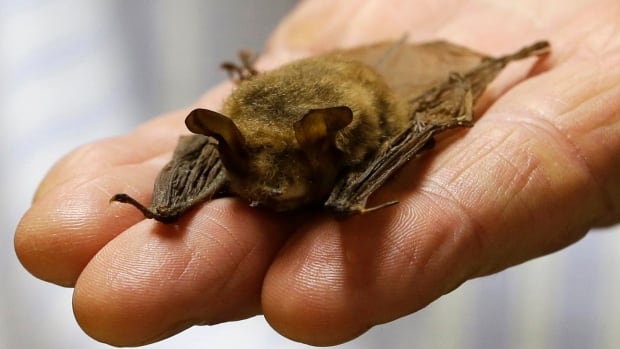A deadly pandemic has decimated bats in North America — and that has ultimately had harmful effects on humans, including higher rates of infant mortality, according to a new study.
The research is part of growing evidence that humans rely on the animal and plant species around them, and are harmed when those species decline or go extinct.
White-nose syndrome is a deadly fungal disease that kills an average of 70 per cent of bats it infects, and has been spreading to new areas since it was first reported on the continent in 2006.
The disease wakes bats during their hibernation, often causing them to freeze and starve to death.
What happens when bats aren’t there for farmers?
Ecologists know that bats play a crucial role in eating up and controlling insect pests.
Because of that, Eyal Frank, an environmental economist at the University of Chicago, decided to look at what happened when white-nose syndrome spread into new counties in the eastern U.S., decimating bat populations.
He found that farmers responded to the resulting insect outbreaks by increasing their pesticide use 31 per cent. Pesticides are toxic, and often associated with human health impacts such as increases in infant deaths.
Frank found that infant mortality went up eight per cent after the arrival of white-nose syndrome in a county, according to his study published today in the journal Science.
“At first I was surprised,” Frank said, noting those increases are “big effects.”
But he noted that in regions affected by white-nose syndrome, bat populations don’t just decline, but plummet, and are often wiped out altogether.
“This is really turning off the switch on biological pest control in some of these counties,” he said.
That forces farmers to compensate with “a lot more insecticides,” which he notes are toxic by design.
Frank also found evidence that not only were the pesticides expensive, but they weren’t as good as the bats at controlling insects — farmers’ revenue from crop sales fell 29 per cent in areas hit by the bat pandemic.
He estimates that in total, farmers in communities with bat die-offs lost $26.9 billion between 2006 and 2017. Putting a number to damages from infant mortality resulted in a societal cost of $39.6 billion from the loss of bats.
Researchers in B.C. are monitoring bats in an effort to protect them from a fatal disease called white-nose syndrome. It causes the animals to come out of hibernation in winter when there is no food, often leading to their death.
The importance of biodiversity
The study shows how interactions between species such as bats and insects stabilize the ecosystems that other species rely on, including humans, who can be harmed when those species disappear, Frank said.
“These ecosystems are very complex systems with many interactions between species, and we do not fully understand what to expect or what will happen when we allow one species to fall below some viable population level or to go extinct,” said Frank, who had previously linked the deaths of half a million people in India to the collapse of local vulture populations due to accidental poisoning.
He added that preserving more species and more biodiversity can provide redundancies so that if one species declines, another may be able to fill its role.
Jianping Xu, a McMaster University professor who studies white-nose syndrome in North American bats, said the new study shows that bats are important “not only for ecosystem, but also for agriculture and for human health.”
Xu, who did not participate in the research, said the “data looks pretty solid.” While the study focused on the eastern U.S., Xu said white-nose syndrome is in all 10 Canadian provinces, and bats here are even more affected, as it’s colder and they have a longer hibernation.
He’d like to see similar Canadian data on the link between bat declines, pesticides and infant mortality.
“I wouldn’t be surprised if Canadian data show a similar pattern,” he said.
Xu added that increased use of pesticides is also linked to bat declines, creating a “vicious cycle.” He believes pesticide applications should be limited to areas without bats.
Bruce Lanphear, a health sciences professor and expert in pesticides at Simon Fraser University, said the study “elegantly” uses the pandemic among bats as a natural experiment to show the impact of pesticides on human health. But he noted the research has limitations in determining which pesticides were implicated in these health impacts.
Lanphear, who has been critical of the federal government’s transparency when it comes to pesticides, said the findings should also lead us to “ask questions like, ‘Why aren’t our governments finding ways to reduce pesticide use?'”



